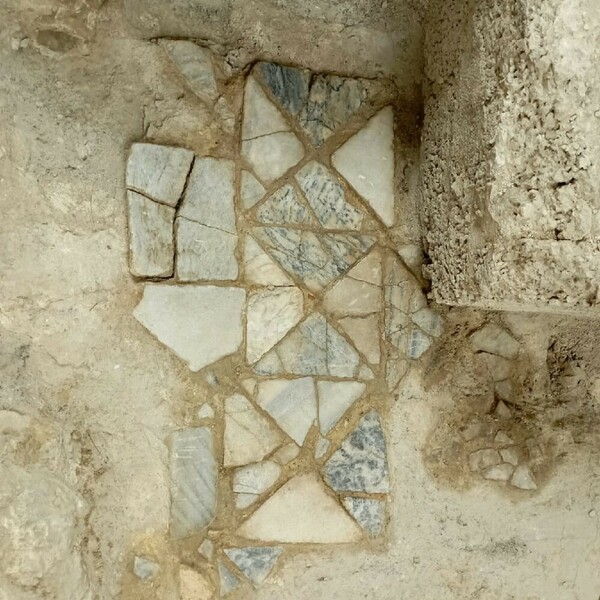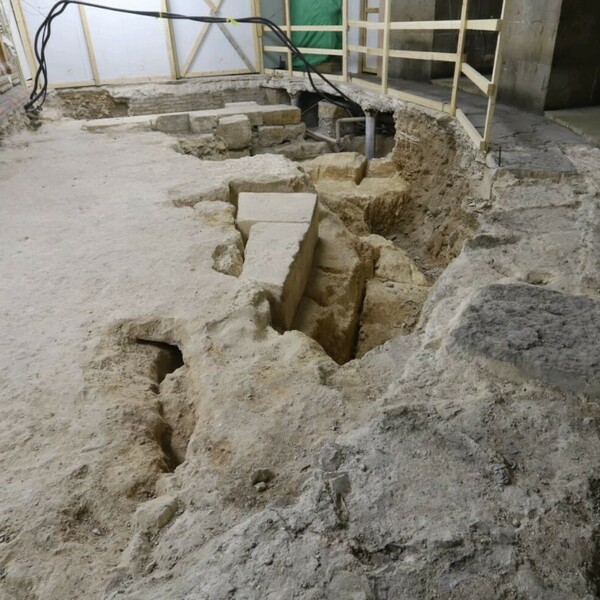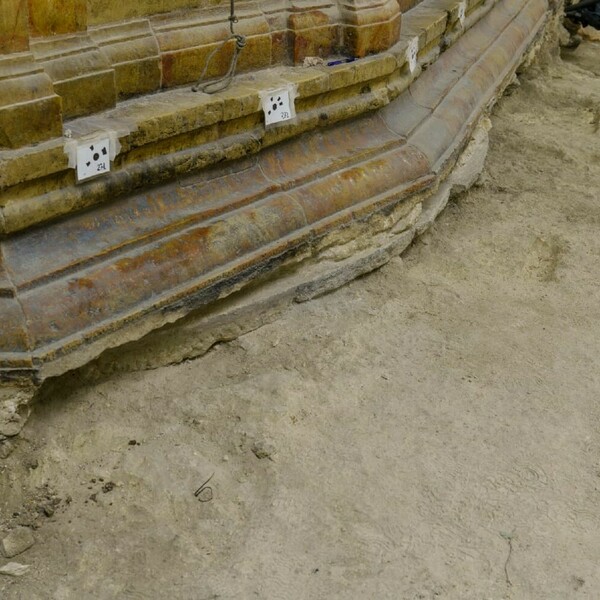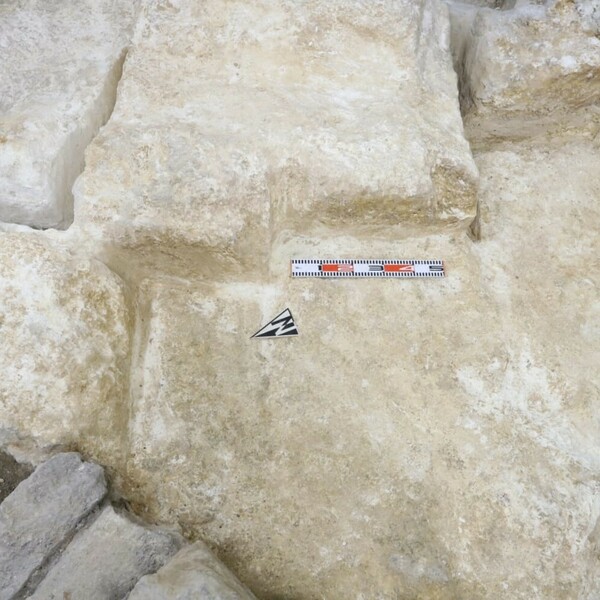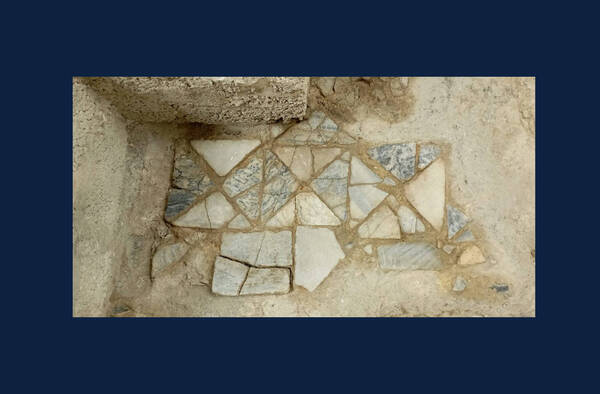
It has now been a little over 9 months since the renovation work on the floor of the Holy Sepulcher began. Nearly 1,000 square meters of cobblestones worn by time and pilgrims, are removed in successive phases, making the basement of the basilica accessible to the excavations. The heads of the Greek-Orthodox, Latin and Armenian Apostolic Churches, responsible for the holy place, scrupulously follow the works thanks to regular visits, the last of which dates back to January 11th.
After having excavated the area of the Arch of the Virgin as well as the northern and intermediate part of the Rotunda, the archaeologists of the Department of Antiquities of the Sapienza University of Rome are now concentrating on its southern half, compelling the Copts to move their chapel, made inaccessible, in a prefabricated structure.
And under the slabs, the bedrock of the stone quarry used for public crucifixions which is revealed: "The traces of the wedges and cuts used to detach the stones, often very large, are clearly visible", explains the Professor Francesca Romana Stasolla in a statement issued by the Custody of the Holy Land on January 15th.
As a result, these cuts create large holes: “The depth of the quarry varies from a few centimeters to more than two meters in places,” continues the archaeologist. Holes, on which Emperor Hadrian (117-138 AD) had a temple built, the foundations of which are revealed once the paving stones have been removed. These Roman structures were already discovered during excavations carried out in 1974 by Charles Couasnon and documented by the Franciscan Virgilio Corbo. “Exploring this area again allows us to update the documentation and better connect it to new archaeological data,” explains Francesca Romana Stasolla.
The remains of a Constantinian floor
Current excavations also shed light on the evolution of the place. In the first decades of the 4th century, at the instigation of the Emperor Constantine, Hadrian's temple was destroyed and the area razed: "The rock was cut down to the base of the tomb, identified as that of Christ and dug into the hill, to create a flat area. Remains of the first monument built around the tomb have been found under the current aedicula: it is a circular floor in reused marble, carefully worked, the circumference of which includes the entire surface of the tomb", explains the specialist before insisting: “Even the oldest representations of the tomb show a circular monument.”
The remains of two floors, made using the opus sectile technique (assembly of marble slabs to create geometric shapes) were unearthed. The oldest uses white and gray marble slabs, laid directly on the rock. Charles Couasnon already found part of it in the 1970s. The other, more recent, was made from reused marble.
Analyzes and research will continue for a total of 26 months. Ten areas will be excavated successively to allow the regular performance of liturgies by the different denominations and the normal flow of pilgrims.
Source: Article by Cécile Lemoine for terresainte.net
Original title: Au Saint-Sépulcre, les pavés en dévoilent d’autres
